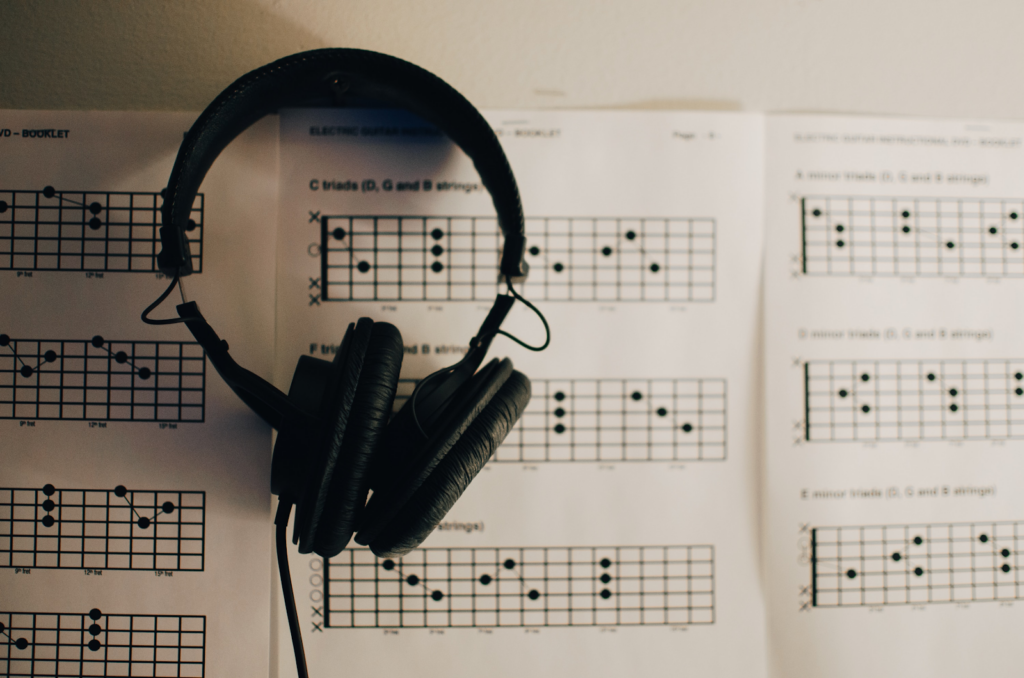Guitar chord families are a fundamental concept in music theory, essential for understanding how all the chords are grouped and used in compositions. This guide will delve into the intricacies of chord families, offering insights for both beginners and seasoned guitarists.

Understanding Chord Families
Chord families are groups of chords that are related by their scale or key. They form the backbone of harmony in music. Each family contains various types of chords, including major, minor, and diminished. Knowing these families simplifies the process of learning and playing songs by narrowing down chord choices.
The Role of Major and Minor Chords
In chord families, minor and major chords play distinct roles. Major, characterized by their bright sound, often form the basis of a chord family in a major key. Minor chords, with their sadder, more complex tone, are predominant in minor keys but also appear in major key chord families as color chords.
Major Scale and Chord Progressions
The major scale is pivotal in forming chord families. A chord progression (a series of chords played in sequence) typically follows the notes of a major scale. For instance, in the C major scale, the chords C, Dm, Em, F, G, Am, and Bdim form a family. Mastering chord progressions will make playing two chord, three chord, and four chord songs much easier.
C Major Scale
In the C major scale, the chord family consists of the chords C major, D minor (Dm), E minor (Em), F major, G major, A minor (Am), and B diminished (Bdim). Each chord corresponds to a scale degree and has a specific function within the family.
The Natural Minor Scale – The natural minor scale creates its own family of chords, distinct from the major scale but often intertwined in musical compositions.

Going In-Depth: Chord Types and Their Functions
Each chord type serves a unique purpose within a chord family, contributing to the overall harmony and feel of the music. Understanding these chord types and their functions allows guitarists to craft chord progressions that tell a story, convey emotions, and create a compelling musical journey. Each chord type, with its unique characteristics, plays a crucial role in music, contributing to the rich and diverse soundscapes that define different genres and styles.
Major Chords: The Cornerstone of Harmony
These chords are bright and uplifting. They consist of a root note, a major third, and a perfect fifth. In chord families, they often serve as the starting point or ‘home base.’ They provide a sense of stability and resolution.
The I (first) and IV (fourth) chords in a major key are typically major chords, forming the backbone of many popular chord progressions.
Minor Chords: Depth and Complexity
These chords comprise a root note, a minor third, and a perfect fifth. They have a more somber and introspective sound compared to major. They also add emotional depth and complexity to the music, serving as a contrast to the brightness of their major counterparts.
In a major chord family, the ii (second), iii (third), and vi (sixth) chords are usually minor, offering a balance to their major counterparts and enriching the harmonic palette.
Diminished Chords: Tension and Release
Diminished chords, formed by a root, a minor third, and a diminished fifth, are dissonant and unstable sounding. The primary role of the diminished chord is to create tension that seeks resolution, often resolving to a major or minor chord a half-step higher. They frequently appear as the vii° chord in major scales and are a staple in genres like jazz and classical music for their dramatic effect.
Dominant Seventh Chords: The Call for Resolution
Dominant chords are a major chord variation with an added minor seventh above the root. They have a distinct, unresolved sound.
Dominant seventh chords create a strong desire for resolution, often leading back to the tonic (I) chord. This tension and subsequent resolution are fundamental to music’s harmonic structure, driving the progression of chord sequences.
Augmented Chords: The Unusual Twist
Formed by a root, a major third, and an augmented fifth, augmented chords have an unusual, slightly dissonant sound. They’re less common than other chord types and are often used for dramatic effect, often in transitional passages or to add color to standard progressions.
The peculiar sound of these chords makes them ideal for creating surprise or emphasizing certain moments in a composition.

The Dynamics of Chord Families in Different Keys
The dynamics of chord families vary significantly across different keys. Each key has a unique set of chords that sound harmonious when played together. Understanding these nuances is crucial for any guitarist.
Major Key Dynamics: Stability and Brightness
In major keys, chord families usually follow a pattern derived from the major scale: major, minor, minor, major, major, minor, diminished.
The first (I), fourth (IV), and fifth (V) chords are major, providing a sense of stability and brightness. The second (ii), third (iii), and sixth (vi) chords are minor, adding depth and contrast. The seventh (vii°) chord is diminished, often used for tension and leading back to the tonic.
In the E major scale, the chord family consists of E major, F# minor, G# minor, A major, B major, C# minor, and D# diminished.
Minor Key Nuances: Emotional Depth and Complexity
The chord family in a minor key is based on the natural minor scale, which provides a different set of chords compared to its relative major.
The i (minor tonic), iv (minor subdominant), and v (minor dominant) chords create a more introspective and complex mood. The ii° (diminished), III (major), VI (major), and VII (major) chords offer variety and color.
In the D minor key, the chord family includes D minor, E diminished, F major, G minor, A minor, Bb major, and C major.
The Role of Relative Minor in Major Key Families
Every major key has a relative minor key that shares the same chords but centers around a different root note. This relationship greatly influences the mood and possibilities within chord progressions. The relative minor is found by locating the sixth scale degree of a major scale. For instance, the relative minor of G major is E minor.
While the chords remain the same, their order and emphasis change, leading to distinct progressions and moods.
Modulation Between Keys
Skilled guitarists often modulate between different chord families within a song, smoothly transitioning between keys to add dynamic shifts in mood and intensity.
For example, a song might start in C major and then modulate to its relative minor, A minor, for a bridge or chorus, utilizing shared chords to create a seamless transition.
Understanding Key Signatures
Key signatures help guitarists quickly identify the scale and corresponding chord family for a particular key. Knowing the key signature allows for swift identification of the diatonic chords (chords within the key) and facilitates improvisation and songwriting.

Chord Progressions and Harmonic Relationships
Chord progressions are the heart of a song’s harmony, and understanding their intricacies is essential for any guitarist. This section delves into how chords within a family interact, create tension and resolution, and overall contribute to the musical narrative.
A chord progression is a sequence of chords played in a particular order. It’s the foundation upon which melodies and rhythms are built. These progressions dictate the flow of the music, guiding the emotional and dynamic shifts within a composition.
The Tonic-Dominant Relationship
The tonic chord, usually the first chord in a scale (I), is the home base of a progression. It’s where progressions often begin and end, providing a sense of completion.
The dominant chord (V), especially when used as a seventh chord, creates tension that naturally resolves back to the tonic. This tension-resolution dynamic is crucial in music.
Common Chord Progressions
Certain progressions, like the I-IV-V, ii-V-I, and I-vi-IV-V, are staples in music, known for their pleasing harmonic movement.
Progressions can vary in complexity, from simple three-chord sequences to complex, jazz-influenced changes.
Chord Function and Movement
While some chord changes are predictable and follow traditional patterns, unexpected chord movements can add intrigue and freshness to a piece. Each chord in a progression serves a purpose – establishing the key, creating tension, providing release, or adding color.
The Cadence: A Harmonic Punctuation
A cadence is a sequence of chords that brings a section, phrase, or piece of music to a close. It’s like punctuation in a musical sentence. Cadences can be strong (authentic), giving a sense of finality, or weak (half), which leaves a feeling of continuation. Plagal and deceptive cadences are other forms, each creating different resolutions and expectations.
Harmonic Rhythm: Timing of Chord Changes
Harmonic rhythm refers to the rate at which chords change in a progression. It can greatly affect the mood and drive of a piece. Slow harmonic rhythms create a sense of calm and space, while rapid changes can generate excitement and intensity.
Modal Interchange and Borrowed Chords
Borrowing chords from parallel scales or modes (modal interchange) is a technique to add color and diversity to progressions. For example, a chord progression in C major might borrow the Bb major chord from C minor, adding an unexpected twist to the harmony.
Chords Sound Different in Various Contexts
The same chord can evoke different emotions depending on its place in a progression, its surrounding chords, and the overall context of the piece. Experimenting with chord inversions, extensions, and voicings can further alter how a chord feels within a progression.
Advanced Harmonic Concepts
Secondary dominants and leading-tone chords are used to temporarily modulate to different key areas within a progression, adding complexity and richness.
Introducing chromatic or outside-the-key chords can create a sense of surprise and freshness, often used in jazz and progressive rock songs.

Practical Applications for Guitarists
Mastering the use of chord families can significantly elevate your guitar-playing and songwriting abilities. Here are some detailed tips to utilize chord families in various musical contexts.
Familiarize Yourself with Chord Families in Key Scales – Dedicate time to understanding the chord families in different keys. Start with common keys like C, G, and D major, and then explore less common ones. Regularly practice chord progressions within these families to internalize their sound and feel.
Understand the Role of Each Chord – Analyze chord functions. Learn the specific role and emotional impact of each chord within its family. For instance, recognize how a dominant chord creates tension that seeks resolution. You can then use this understanding to create chord progressions that tell a story or evoke certain emotions.
Experiment with Chord Progressions – Beyond traditional progressions, experiment with unconventional chord sequences to discover unique sounds. Combine chords from different families or keys (modal interchange) for creative harmonic landscapes.
Use Chord Families for Improvisation – Knowing the chords in a key helps in choosing scales and notes that will sound harmonious when improvising. Try different melodic lines over known chord families to enhance your improvisational skills.
Explore Chord Variations – Don’t limit yourself to basic triads. Explore seventh chords, add chords, suspended chords, and others for richer harmonies. Experiment with chord inversions and different voicings to keep your playing fresh and interesting.
Apply Chord Families in Songwriting – Choose a key and use its chord family as a starting point for composing. From then on, you can use the emotional qualities of different chords to build musical themes or motifs in your compositions.
Learn to Transpose Between Keys – Understanding how to transpose chord progressions to different keys is essential, especially when accompanying singers or playing with other musicians. Regularly practice moving chord progressions from one key to another to build this skill.
Master the Art of Modulation – Learn to transition (modulate) between different chord families seamlessly for dynamic changes in your music. Identify chords that can act as bridges between two keys and practice using them in transitions.
Develop an Ear for Chord Relationships – Develop the ability to identify chord progressions and the key of a song just by listening. This skill is invaluable for learning new songs quickly and playing by ear. Regularly play along with recordings to hone this skill.
Conclusion
Effectively using chord families can be likened to having a musical compass. With these tips and regular practice, guitarists can navigate through the vast landscape of music with confidence, creativity, and ease. Whether it’s improvisation, songwriting, or collaborative playing, a deep understanding of chord families opens up endless possibilities and enhances musical expression.


